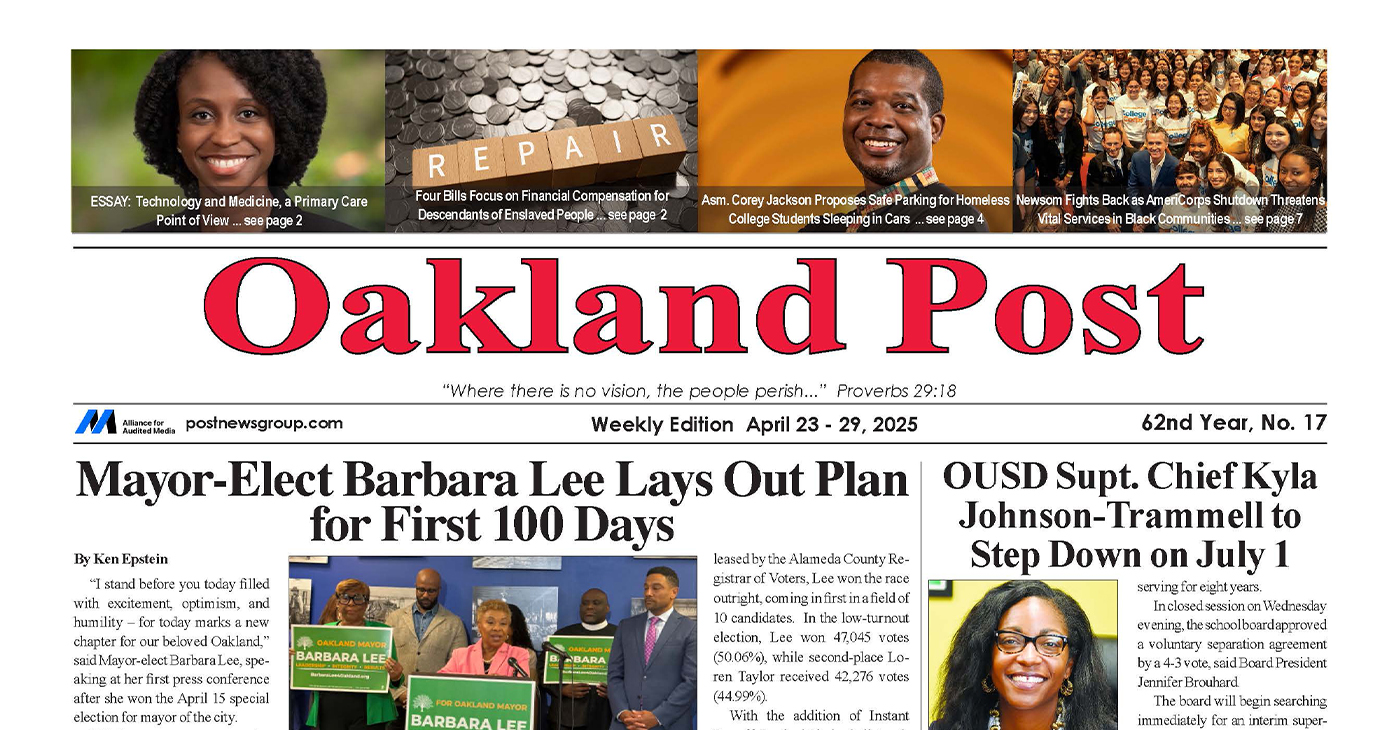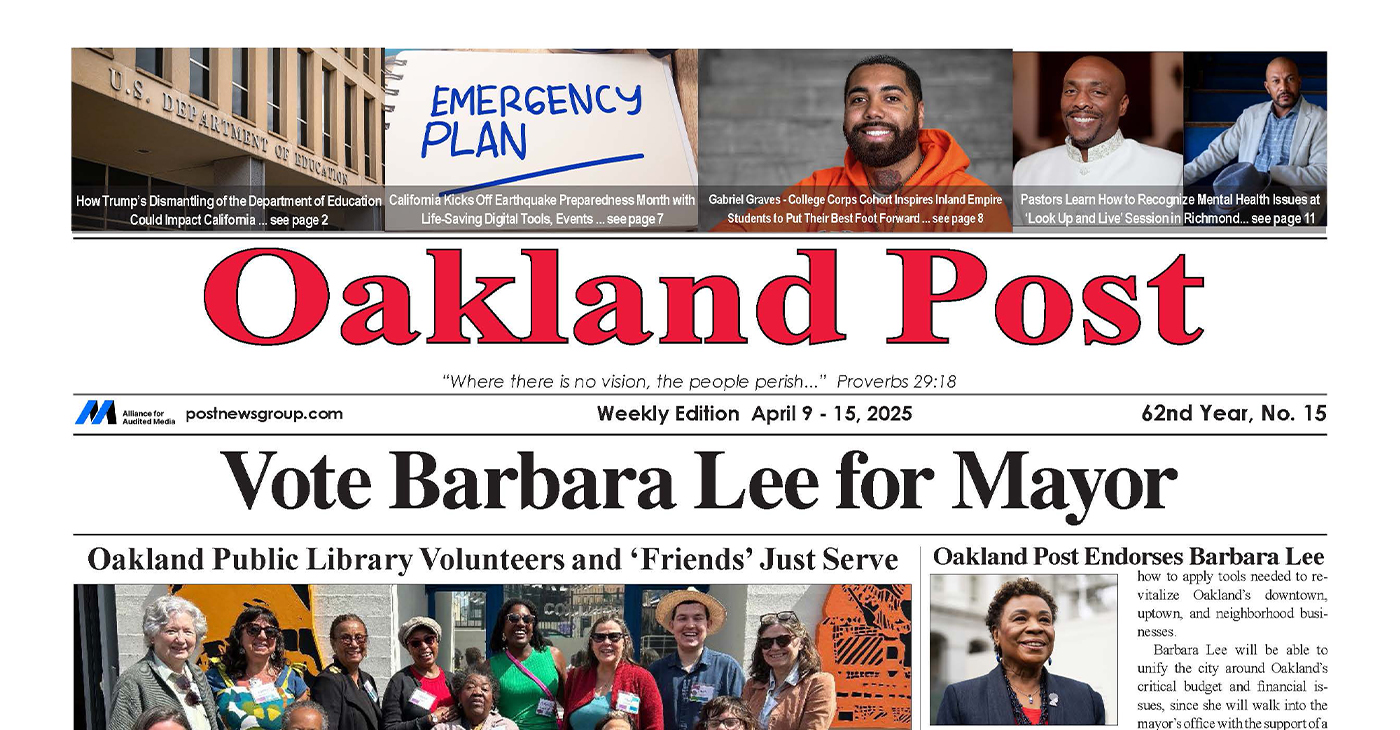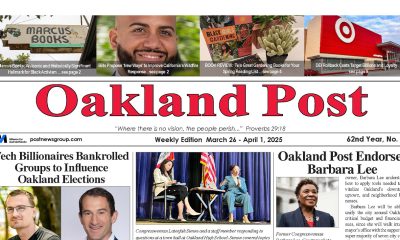Bay Area
Florence Agnes Blackburn September 29, 1936 – February 28, 2023
Ms. Florence Agnes Blackburn was born Sept. 29, 1936 in Houston Texas. She went on to be with the Lord God on Tuesday, Feb. 28, 2023. She was the youngest of four children born to Mr. Percy H. Amos Sr. and Mrs. Brunella Mullone Amos. Florence A. Blackburn a.k.a. “Florencia” was a woman of faith and many talents. She was baptized at St. Nicholas Catholic Church and School, the first Black parish located in Houston Texas.

Ms. Florence Agnes Blackburn was born Sept. 29, 1936 in Houston, Texas. She went on to be with the Lord God on Tuesday, Feb. 28, 2023. She was the youngest of four children born to Mr. Percy H. Amos Sr. and Mrs. Brunella Mullone Amos.
Florence A. Blackburn a.k.a. “Florencia” was a woman of faith and many talents. She was baptized at St. Nicholas Catholic Church and School, the first Black parish located in Houston Texas.
While her family’s roots are firmly in the Cane River Creole community of Louisiana, she knew California to be home since 1942. Her parents owned and operated the first African American service station in Berkeley, California. It was there where she learned about automobiles, learning to drive by 14 years old.
When her parents moved to Anchorage, Alaska in 1952; Florence stayed in California with her siblings, Percy Amos Jr., Yvonne A. Miller and Lucille R. Amos. She attended Lafayette Elementary School, Hoover Jr. High, Holy Names High School and San Francisco State University where she majored in Biological Science.
Upon graduation she enjoyed a long career as a histologist at Highland Hospital, Oakland, California from 1959 to 1980. Florence continued her education earning additional degrees from the College of Alameda and a Bachelor of Arts in History from the University of California in Berkeley 1999.
Everyone has dreams, and for Florence that dream involved fashion. She opened her boutique on Grand Avenue in Oakland. It was there she was able to pursue one of her many passions bringing her garments to life and “Florencia” was born!!
Later in life she went on to hold several positions for the City of Oakland including Litter Enforcement Officer, where she enjoyed working to discover who had dumped their property illegally. When Oakland closed that department, she worked as a library assistant at the MLK Branch before transferring to West Oakland Public Library and retiring in 2018. The library had been her second home among all those books.
Lady Blackburn was initiated into the Knights of St. Peter Claver in 2005, originally part of Court #121 St. Andrews-St. Joseph Catholic Church before transferring to St. Columba Court #127.
Making St. Columba her home, she served as a eucharistic minister, member of the Hope for Haiti Ministry, as well as on the scholarship committee. Ever the social butterfly, Florence enjoyed Wednesday morning church service and the Haiti White Party where she got to show off her amazing fashions. She was also a member of the Creole Heritage Center at Northwestern State University in Natchitoches, Louisiana, which is celebrating its Silver Jubilee.
A few of her other passions included cultivating her backyard garden where she grew a large variety of vegetables, plants, flowers and herbs. Here she also hosted her friends on Thursday nights, enjoying her homemade wine and famous gumbo. She loved traveling to the islands and especially to Texas, spending time with her four great-grandchildren, telling them scary stories while they would laugh, act scared, run and hide.
She was preceded in death by her parents Mr. and Mrs. Percy H. Amos Sr.; older brother Percy
- Amos Jr. and her nephew Kendrick “Jerry” Miller. She is survived by her sisters Yvonne A. Miller and Lucille R. Cole; her two children, Sheila R. Payne and Dino G. Blackburn, grandchildren Pamela P. Palmer, Stephen F. Payne, Mikaela D. Blackburn, and great-grandchildren Kyra R. Payne, Kruze Z. Payne, Olivia S. Palmer and Grant W. Palmer and the many nieces and nephews who loved her.
She will be greatly missed by family and friends.
Florencia (GG), Forever our Guardian Angel!!
Memorial Service
Saturday, March 25, 2023
11:30 a.m.
St. Columba Catholic Church 6401 San Pablo Ave.
Oakland, California 94608 Celebrant Father Aidan McAleenan
Final resting place St. Augustine Catholic Church Cemetery, Natchez, Louisiana
To be determined!!
Zoom link Funeral Mass for Ms. Florence Blackburn:
Time: Mar. 25, 2023, 12 p.m. Pacific Time (US and Canada)
Join the Zoom Meeting https://us02web.zoom.us/j/84373171098?pwd=NU9Qa2dtSDV0T2dTVXRlOVdvWlA5dz09 Meeting ID: 843 7317 1098
Passcode: 1898
Dial by your location
+1 669 444 9171 US
Meeting ID: 843 7317 1098
Passcode: 1898
Activism
Oakland Post: Week of April 23 – 29, 2025
The printed Weekly Edition of the Oakland Post: Week of April 23 – 29, 2025

To enlarge your view of this issue, use the slider, magnifying glass icon or full page icon in the lower right corner of the browser window.
Activism
Oakland Post: Week of April 16 – 22, 2025
The printed Weekly Edition of the Oakland Post: Week of April 16 – 22, 2025

To enlarge your view of this issue, use the slider, magnifying glass icon or full page icon in the lower right corner of the browser window.
Activism
Oakland Post: Week of April 9 – 15, 2025
The printed Weekly Edition of the Oakland Post: Week of April 9 – 15, 2025

To enlarge your view of this issue, use the slider, magnifying glass icon or full page icon in the lower right corner of the browser window.
-

 Activism4 weeks ago
Activism4 weeks agoOakland Post Endorses Barbara Lee
-

 Activism4 weeks ago
Activism4 weeks agoOakland Post: Week of March 28 – April 1, 2025
-

 Activism3 weeks ago
Activism3 weeks agoOakland Post: Week of April 2 – 8, 2025
-

 #NNPA BlackPress3 weeks ago
#NNPA BlackPress3 weeks agoTrump Profits, Black America Pays the Price
-

 Activism2 weeks ago
Activism2 weeks agoOakland Post: Week of April 9 – 15, 2025
-

 #NNPA BlackPress3 weeks ago
#NNPA BlackPress3 weeks agoHarriet Tubman Scrubbed; DEI Dismantled
-

 #NNPA BlackPress3 weeks ago
#NNPA BlackPress3 weeks agoTrump Targets a Slavery Removal from the National Museum of African-American History and Culture
-

 #NNPA BlackPress3 weeks ago
#NNPA BlackPress3 weeks agoLawmakers Greenlight Reparations Study for Descendants of Enslaved Marylanders























































